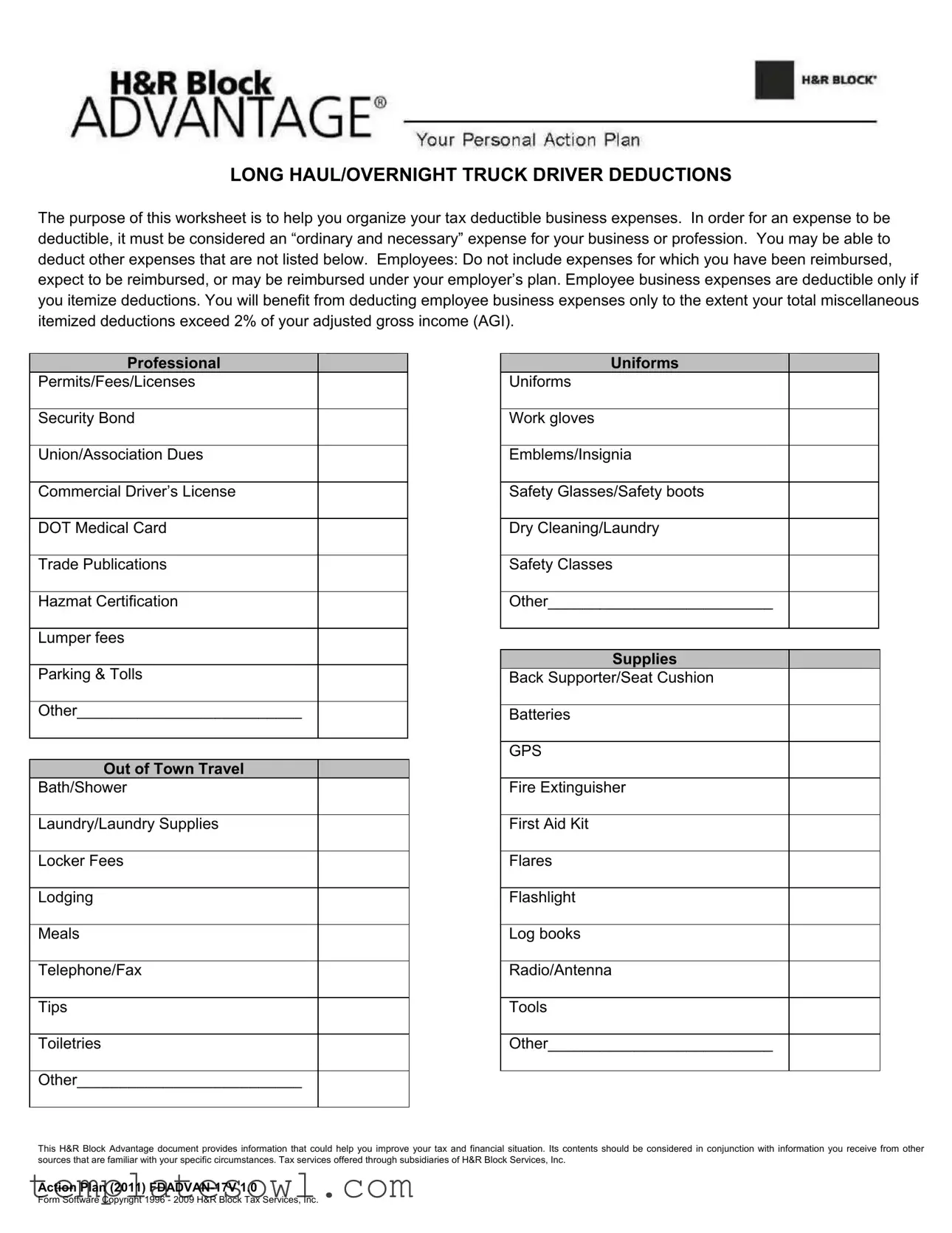Completing the Truck Driver Expenses Worksheet can be a daunting task. Many individuals overlook critical aspects, which can lead to inaccuracies in their tax returns or missed deductions. A common mistake is failing to ensure that all expenses listed are genuinely "ordinary and necessary." Not all costs associated with truck driving qualify as deductible. It is essential to assess whether each expense relates directly to the work performed.
Another frequent error involves including reimbursed expenses. Taxpayers should not report any expense they have already been compensated for by their employer. Doing so could inflate their expenses and lead to complications if the IRS queries the returns. It's vital that individuals maintain a clear distinction between personal and reimbursed costs, ensuring transparency in their reporting.
Some individuals neglect to review eligibility criteria for itemizing deductions. Expenses for employees can only be deducted if they choose to itemize instead of taking the standard deduction. This choice may impact the potential benefit of listing expenses, so understanding the implications is crucial for accurate filing.
Moreover, failing to categorize expenses properly can pose problems. The worksheet provides multiple categories, such as “Out of Town Travel” and “Supplies.” Misplacing items—like recording a GPS device under “Supplies” instead of “Out of Town Travel”—may lead to confusion and misreporting. Careful attention to where expenses are recorded can prevent such oversights.
Not keeping receipts is another significant hurdle. Without proof of payment, it becomes challenging to substantiate claims made on the worksheet. Taxpayers need to maintain records for all deductible expenses, as these documents provide necessary evidence, helping taxpayers defend their deductions if questioned by the IRS.
Many people also mistakenly think they can deduct personal expenses related to their trucking work. For instance, costs associated with personal clothing or meals, if not directly related to the job, are generally not deductible. It’s crucial to differentiate between work-related expenses and personal expenditures.
A lack of familiarity with specific local regulations can also lead to errors. Some expenses might qualify for deductions in one state but not in another. Therefore, being informed about local laws governing deductions helps in accurately completing the form.
Additionally, individuals may overlook the inclusion of all potential expenses. The form lists several categories, but those who do not think creatively about other expenses might miss out on deductions. Things like safety courses or tools should be considered if they relate directly to enhancing job performance.
Finally, procrastination can hinder accurate completion of the worksheet. Rushing through the process at the last moment often leads to mistakes and missed opportunities. Dedicating ample time for review and completion can result in a more accurate and beneficial reporting of expenses.

